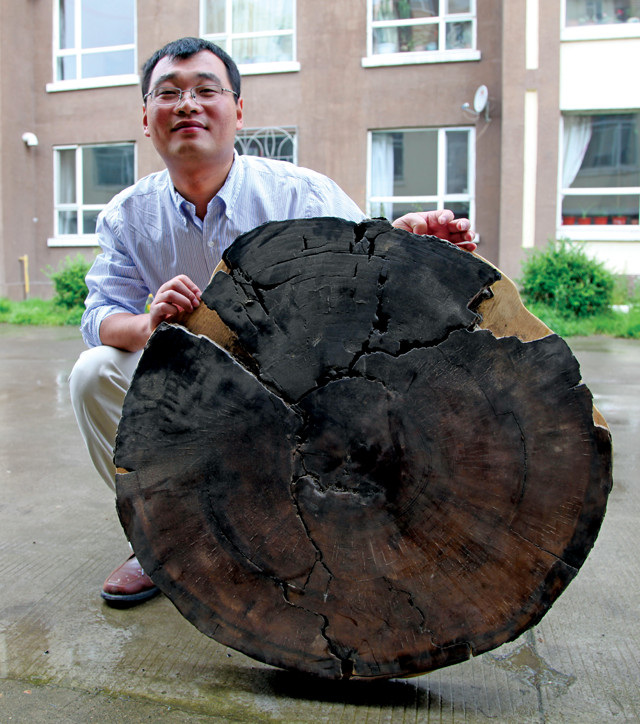
by Mary Caperton Morton Monday, May 15, 2017

A fossilized tree, killed by the Millennium Eruption of Changbaishan Volcano on the border between China and North Korea, has allowed scientists to pinpoint the date of the eruption. Credit: Clive Oppenheimer.
Changbaishan Volcano in northeastern China, on the border with North Korea (where it’s known as Mount Paektu), is steeped in superstition, having produced devastating eruptions several times in recorded history. Legends that a massive eruption in the 10th century led to the downfall of a regional empire have now been refuted, however, thanks to a new analysis of a fossilized tree killed by the eruption that dates the eruption to after the kingdom fell.
Based on tree-ring analysis, the tree, found on the Chinese side of the volcano, was 264 years old when it was buried by hot lava, ash and pumice during Changbaishan’s “Millennium Eruption,” researchers reported in Quaternary Science Reviews. Given the tree’s age, the team surmised that it would have been alive in A.D. 775, when a burst of cosmic rays is known to have left a distinct radiocarbon signature in trees around the world. By locating this signature in the larch tree and counting to the outer ring, the team determined that the tree likely perished in 946. They then checked their finding against a record of volcanic ash in ice cores from Greenland from the same time period. From the comparison, they narrowed down the eruption window to the last two or three months in 946.
“The Millennium Eruption has fascinated scientists and historians for decades because of its size, potential worldwide impacts, and the mystery surrounding when it actually happened,” said lead author Clive Oppenheimer of the University of Cambridge in England, in a statement. “Lacking a clear historical record of the event, there have been dozens of attempts to date the eruption using conventional tree-ring techniques,” he said. “Now, we have a secure date for the eruption at last, [and] we can be more confident in investigating the effects it ha[d] on the climate, environment and society.”
Previously, some historians thought the eruption may have caused the collapse of the Bohai Kingdom, which reigned in the region from A.D. 698 to 925, but the new study confirms that the eruption took place two decades after the fall of the kingdom. The new date may instead corroborate a report of “white ash falling like snow” on Nov. 3, 946, that was preserved at a Japanese temple, possibly pinpointing the date of the eruption, as no volcanoes are known to have erupted in Japan around the same time.
© 2008-2021. All rights reserved. Any copying, redistribution or retransmission of any of the contents of this service without the expressed written permission of the American Geosciences Institute is expressly prohibited. Click here for all copyright requests.